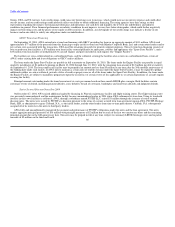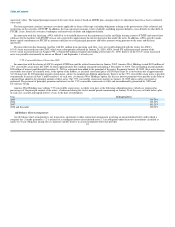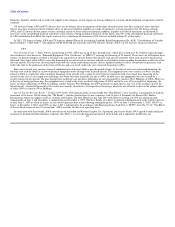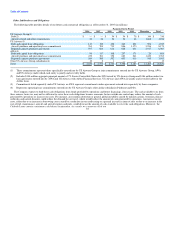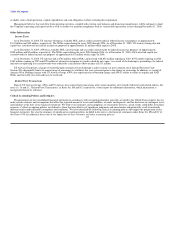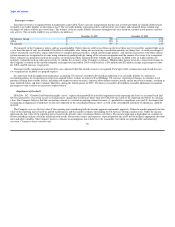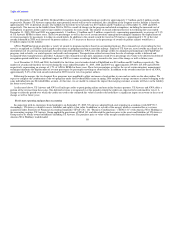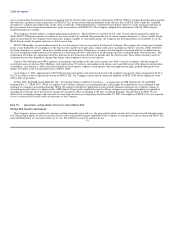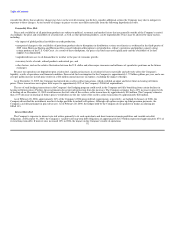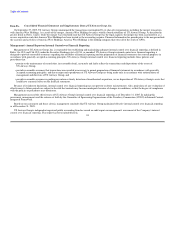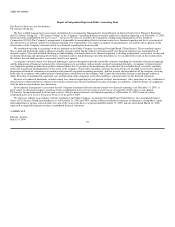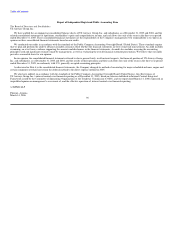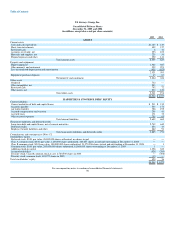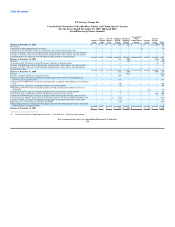US Airways 2005 Annual Report Download - page 96
Download and view the complete annual report
Please find page 96 of the 2005 US Airways annual report below. You can navigate through the pages in the report by either clicking on the pages listed below, or by using the keyword search tool below to find specific information within the annual report.
Table of Contents
US Airways' pension plan terminations: Effective March 31, 2003 and in connection with the first bankruptcy, US Airways terminated its qualified and
nonqualified pilot defined benefit pension plans. The PBGC was appointed trustee of the pilots' qualified plan effective with the termination. In January 2005
and in connection with the second bankruptcy, the Bankruptcy Court approved the termination of US Airways' three defined pension benefit plans and the
PBGC was appointed trustee of each of the three plans on February 1, 2005. These plans had aggregate benefit obligations of $2.71 billion and aggregate plan
assets of $1.76 billion as of the plans' termination dates. See also note 7(a) to US Airways' notes to financial statements included in Item 8C of this report for
additional information about these terminated plans.
US Airways' postretirement benefit obligations: During hearings in late 2004 and January 2005, the Bankruptcy Court approved various settlement
agreements between US Airways and its unions, and between US Airways and the court-appointed Section 1114 Committee (representing retirees not
represented by the unions) to begin the significant curtailments of postretirement benefits. Effective March 1, 2005, those benefits were significantly reduced.
US Airways re-measured its postretirement benefit obligation based on the new terms, which resulted in a reduction in the postretirement benefit obligation of
approximately $1.1 billion and a curtailment gain of $183 million. Since the remeasurement and reduction of the postretirement benefit obligation created a
significant unrecognized prior service gain, US Airways recognized net periodic other postretirement benefit income until the time of the September 27, 2005
emergence from bankruptcy. In accordance with SOP 90-7, US Airways revalued its postretirement benefit obligation on emergence, and adjusted its liability
to $229 million, a reduction of $1.25 billion.
In December 2003, the Medicare Prescription Drug, Improvement and Modernization Act of 2003 (the "Medicare Prescription Drug Act") became law in
the United States. The Medicare Prescription Drug Act introduces a prescription drug benefit under Medicare as well as a federal subsidy to sponsors of
retiree health care benefit plans that provide a benefit that is at least actuarially equivalent to the Medicare benefit. US Airways elected to recognize the
effects of the Medicare Prescription Drug Act in the quarter ended June 30, 2004, as permitted by FASB Staff Position FAS 106-2, "Accounting and
Disclosure Requirements Related to the Medicare Prescription Drug, Improvement and Modernization Act of 2003." The recognition of this subsidy resulted
in a reduction in expense of $20 million for the year ended December 31, 2004, and a $198 million actuarial gain that was subject to amortization, based over
the remaining period to expected retirement. Significant assumptions included in the re-measurement of the accumulated postretirement benefit obligation
were a 6.25% discount rate and a reduction in retiree participation in the company-sponsored plan, as certain defined drug benefit caps make the plan more
costly to retirees than Medicare.
The assumed health care cost trend rates are 10% in 2006 and 9% in 2007, decreasing to 5% in 2011 and thereafter. The assumed health care cost trend
rates have a significant effect on amounts reported for retiree health care plans. See also note 10(a) to US Airways Group's notes to consolidated financial
statements included in Item 8A of this report.
Recent Accounting and Reporting Developments
In December 2004, the Financial Accounting Standards Board ("FASB") issued SFAS No. 123R, "Share-Based Payment" ("SFAS 123R"). SFAS 123R is
a revision of SFAS No. 123, "Accounting for Stock Based Compensation," and supersedes APB 25. Among other items, SFAS 123R eliminates the use of
APB 25 and the intrinsic value method of accounting, and requires the Company to recognize the cost of employee services received in exchange for awards
of equity instruments, based on the grant date fair value of those awards, in the financial statements. Pro forma disclosure is no longer an alternative under the
new standard. Although early adoption was allowed, the Company adopted SFAS 123R as of January 1, 2006, the required effective date for calendar year
companies.
SFAS 123R permits companies to adopt its requirements using either a "modified prospective" method, or a "modified retrospective" method. Under the
"modified prospective" method, compensation 90


